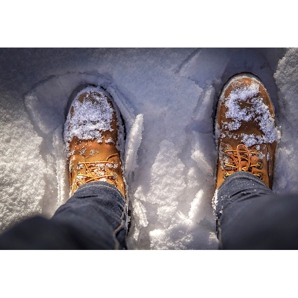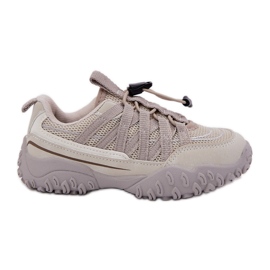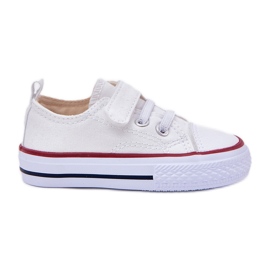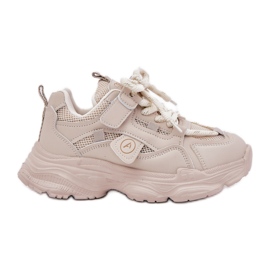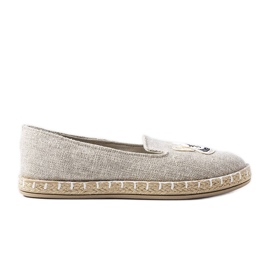Children's shoes - choosing the perfect shoes for the youngest
The importance of appropriate shoes in the child's development
Choosing the right shoes for children is extremely important for the proper development of their feet and general comfort. Children's feet are delicate and constantly grow, so footwear must be well matched, provide adequate support and have shock absorbing properties. Incorrect shoes can lead to foot deformation, posture problems and pain when walking. It is worth paying attention to the flexibility of the soles, the material of the workmanship and the appropriate width of the shoe. When choosing shoes for the youngest, you should also pay attention to their weight - light models will help you move freely and run freely. Properly selected footwear supports the correct biomechanics of gait and allows the child to discover the world freely.
The variety of models of children's shoes
On the children's footwear market you can find a wide range of models that meet different needs and occasions. Among the most popular, we distinguish sports shoes that will work during outdoor activities, everyday shoes ideal for kindergarten or school, as well as elegant models for special occasions. Sandals are often chosen for the youngest children, which provide great ventilation on warm days. Insulated boots will work in cooler months. Shoes with waterproof membranes that protect the feet against moisture are also increasingly available. Manufacturers are trying to combine functionality with an attractive design, thanks to which every child can find something for themselves.
Materials used in the production of children's shoes
The quality of materials used for the production of children's shoes is crucial for the comfort and health of small feet. Natural leather is one of the best choices because of its durability, elasticity and the ability to breathe, which prevents the feet from sweating. The alternative are high -quality synthetic materials, which are often lighter and easier to clean. Textile and mesh materials that provide ventilation and flexibility are popular for sports shoes. The interior of the shoe should be padded with a soft and antiallergic lining. The soles with depreciation will protect the child's feet from shocks, and the appropriate texture on the bottom will prevent slipping.
How to measure children's feet and what size to choose?
Correct measurement of the child's feet is the basis for choosing the right size of shoes. It is best to make a measurement in the afternoon when the feet are slightly swollen after a whole day of activity. Put the child's foot on a piece of paper and mark the longest and widest point. Then measure the distance between these points, which will give the foot length and width. You can use a ruler or a special foot measuring tape for measurement. When choosing shoes, it is worth considering about 0.5-1 cm in supply so that the child takes place for free movement. Too small shoes can cause discomfort and limit the development of the feet, and too large - cause abrasions and problems with maintaining balance.
The importance of the sole and its properties
The sole is an element of a children's shoe that has direct contact with the ground and affects the child's safety and convenience. It should be flexible to enable the natural movement of the foot, and at the same time stiff enough to provide adequate support. A well -designed sole has a non -slip tread that prevents falls, especially on slippery surfaces. In winter models, a sole with additional thermal insulation is used. Materials such as rubber or thermoplastic plastics work well as soles, offering durability and cushioning. Regular checking of the sole condition allows you to assess when to replace the footwear with new ones.
Safety and health of children's shoes
Children's shoes must primarily ensure the safety and health of their feet. That is why it is worth choosing models that have approvals and certificates confirming the low content of harmful substances and anti -allergic materials. Footwear should stabilize the foot, protect the ankle and allow free air circulation to minimize the risk of imprints or infection. Shoes with a suitable fastener - Velcro, shoelaces or buckles - ensure good stabilization and fit. It is also important that the sole absorbs shocks and is non -slip. Choosing the right shoes also helps prevent posture defects and foot deformations in the future.
How to care for children's shoes so that they serve as long as possible
Proper care of children's shoes prolongs their vitality and helps maintain aesthetic appearance. The most important is regular cleaning tailored to the type of material. Leather shoes should be cleaned with a soft brush or a damp cloth, and then impregnated with special preparations that protect against moisture and dirt. Models from synthetic materials can be cleaned with a delicate detergent and dried away from a direct heat source. It is also worth taking care of adequate drying to prevent the development of mold and unpleasant odors. Regular replacement of inserts and the use of appropriate disinfectants will ensure hygiene and comfort for the child.
Seasonality of children's shoes - how to choose footwear for every season of the year
Children's shoes should be adapted to the atmospheric conditions and seasons to provide the child with thermal comfort and adequate protection. In spring and summer, light sandals or shoes made of airy materials that minimize the sweating of the feet are recommended. In autumn, it is worth reaching for waterproof shoes resistant to mud and moisture, and in the winter you need insulated, waterproof models with a non -slip sole for walking on snow and ice. It is also worth having a spare pair of shoes to change to allow you to regenerate. Choosing the right footwear for the season avoids discomfort and potential diseases related to colds or moisture.
Fashionable trends in children's shoes - style and functionality
Although comfort and health are the most important, many models of children's shoes combine these aspects with fashionable design. Currently, shoes in vibrant colors are available, with motifs of favorite characters from fairy tales or animals that children willingly choose. Manufacturers also focus on minimalist, universal designs that match different styles. Among the popular trends you can see shoes with reflective elements that increase road safety, as well as models with ecological materials appreciated by conscious consumers. Fashionable children's shoes are a combination of aesthetics and functionality, which satisfies both parents and the youngest.


